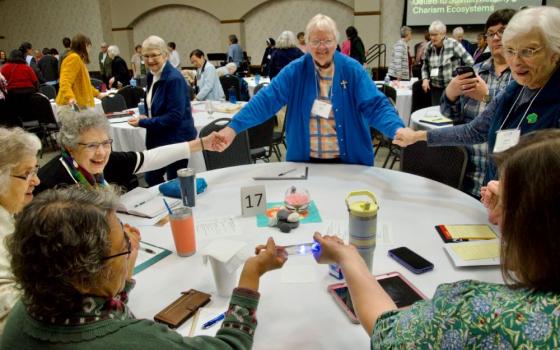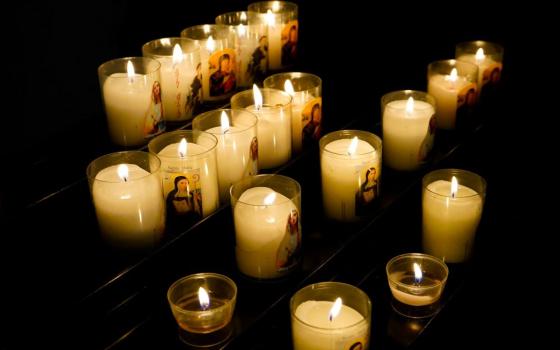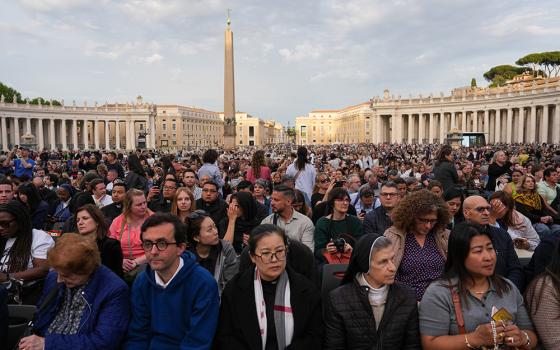In addition to the Benedictine sisters of Kylemore Abbey marking their centennial in December, four other communities mark anniversaries of 200, 100, 175 and 150 years.
The Faithful Companions of Jesus celebrate the 200th anniversary of their founding.
The Society of the Faithful Companions of Jesus was founded by Marie Madeleine d'Houët, a young widow with a son, in 1820 in Amiens, France. A series of events were planned for the bicentenary celebrations to conclude on the feast of Christ the King on Nov. 22, 2020. Members of the congregation have served in the United States since 1894 in Fond du Lac, Wisconsin, and notably in education from 1925 in Providence, Rhode Island.
Before her death in 1858, Marie Madeleine founded schools and orphanages not only in France, but also in England, Switzerland, Italy and Ireland. Since then, the Society of the Faithful Companions of Jesus has continued to spread, with sisters and companions in mission (lay associates) now in Argentina, Australia, Belgium, Canada, England, France, Germany, Indonesia, Ireland, Italy, Myanmar, the Philippines, Romania, South Sudan and the United States.
The Maryknoll Sisters of St. Dominic celebrate the centennial of their becoming a canonically recognized religious congregation.
The institute was founded by Mother Mary Joseph (Mary Josephine "Mollie" Rogers) in Ossining, New York, in 1912, a year after the 1911 creation of the Maryknoll community of missionary brothers and fathers. On Feb. 14, 1920, Pope Benedict XV declared that the community was now a diocesan congregation and could engage in worldwide missionary work under the church's guidance.
The earliest missionary work undertaken by the Maryknoll Sisters was among disadvantaged people in the United States, including the Japanese immigrant population on the West Coast. After their recognition as a congregation, the sisters set out for missionary work in China, Korea, the Philippines, Hawaii and elsewhere. Until 1954, when they became a pontifical religious congregation, the religious institute was known as the Foreign Mission Sisters of St. Dominic.
Today, there are 351 sisters serving in 24 locations around the world. Their missions involve health care, education, ending human trafficking and the abuse of women and children, and helping people access necessities such as clean water and food.
Advertisement
The Sisters, Servants of the Immaculate Heart of Mary mark 175 years.
This congregation was co-founded by Redemptorist missionary Fr. Louis Florent Gillet, who arrived in Monroe, Michigan, from France to be pastor of St. Mary's Parish. Seeing a gap in educational provision, Gillet approached Theresa Maxis Duchemin, a member of the Oblate Sisters of Providence in Baltimore, Maryland, the first religious congregation established in the country for women of color.
In November 1845, she left the Oblate Sisters and, with Gillet, founded the Sisters, Servants of the Immaculate Heart of Mary. On Jan. 15, 1846, St. Mary's Academy opened with 40 students.
The congregation grew, but there were challenges. A jurisdictional dispute over the congregation arose in 1859 between the bishops of Philadelphia and Detroit, and Mother Theresa was deposed as general superior. She spent 18 years in exile with the Grey Nuns of Ottawa in Canada. In 1885, she was allowed to return to the Sisters, Servants of the Immaculate Heart of Mary congregation in West Chester, Pennsylvania, where she lived out her last seven years.
Mother Theresa's legacy of courage, peace and service to the poor continues through 300 sisters. Though education has always been a primary ministry, over the years, their ministries have become more diverse, including pastoral care in hospitals and other health care settings, parish ministry and social services to the poor, ministry with those with AIDS, spiritual direction and retreats, and advocacy efforts for older adults and the environment.
The Monroe, Michigan, community shares a common origin with three other religious communities: the Sisters, Servants of the Immaculate Heart of Mary of Scranton, Pennsylvania; the Sisters, Servants of the Immaculate Heart of Mary of Immaculata, Pennsylvania; and the Oblate Sisters of Providence in Baltimore.
The Oblate Sisters of the Most Holy Redeemer celebrate 150 years.
The Oblate Sisters of the Most Holy Redeemer celebrated 150 years of the beginning of their congregation Feb. 2.
Msgr. José María Benito Serra and Antonia María de Oviedo had no intention of founding a congregation. Their aim was to open a residential shelter for women who could not be admitted to other institutions at that time in the 1860s.
They became aware of the need for a specific congregation dedicated to this work, and the constitutions that were drafted defined their aim as: "The Institute of the Oblates of the Most Holy Redeemer has been founded so that the religious who form it, would carry out the work by welcoming and instructing [the young women], opening a free shelter where they are received with no restriction." On Feb. 2, 1870, Antonia María de Oviedo took the name of Antonia María de la Misericordia and began to wear a religious habit.
The congregation is now present in 15 countries around the world, organized in three provinces. The community arrived in New York in 1964 and began by working with young Hispanic Americans involved in prostitution. It currently works with victims of trafficking.
[Sarah Mac Donald is a freelance journalist based in Dublin.]
Return to the main story Q & A with Abbess Máire Hickey: the impact of COVID-19 on her Benedictines' centennial.





